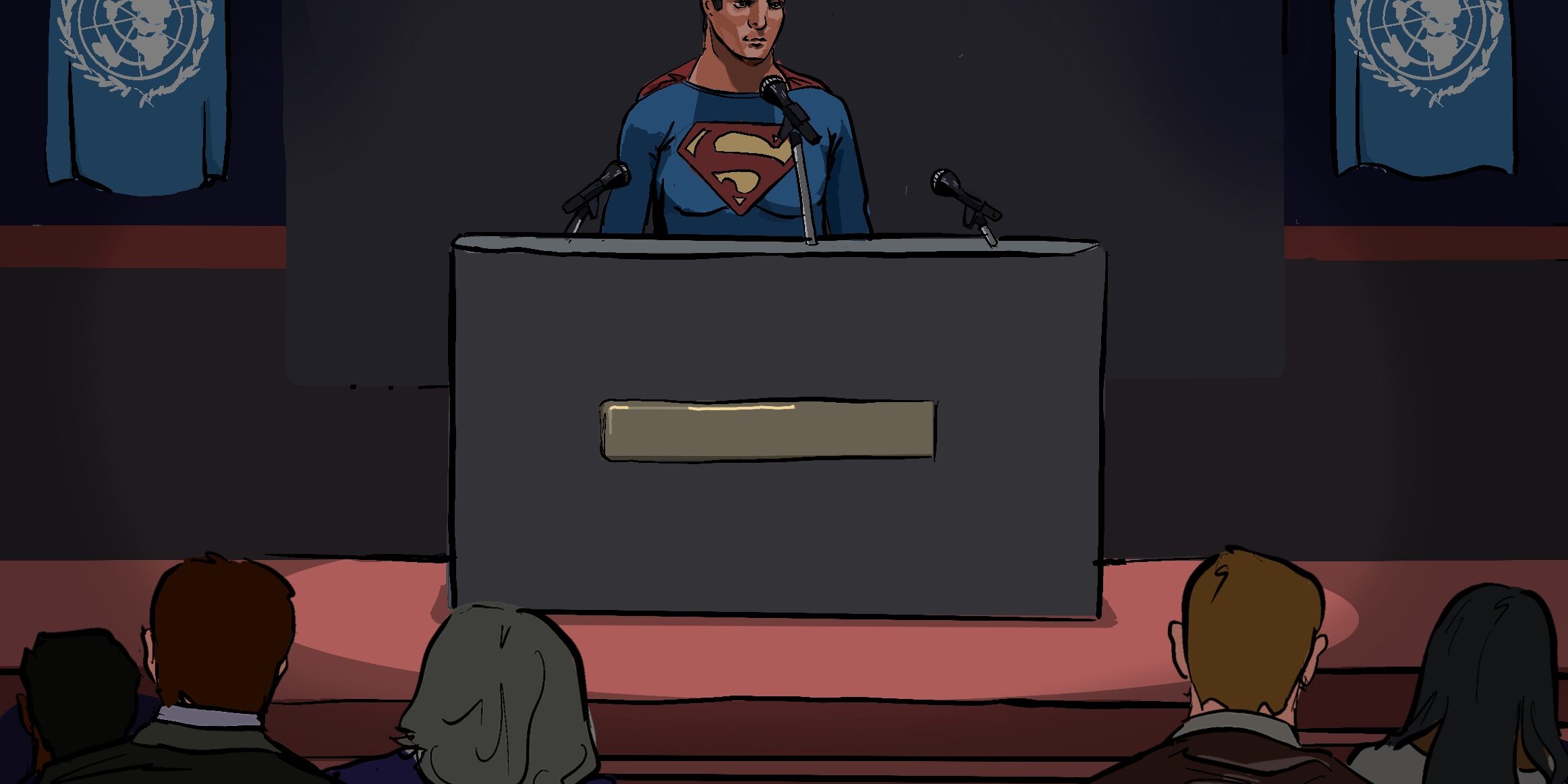Lights, Camera, Peace: The United Nations in pop culture
By Ethan Chan
Illustration by Azadeh Changrani-Rastogi
First mentions in the media
In 1946, the creation of the United Nations Department of Public Information in accordance with the recognition of informing the people regarding the UN’s aims and activities was critical to the success of the organisation. The film division aimed to help films portraying the UN by providing assistance to such films. These efforts came to light in 1950, with the film Mister 880 where Dorothy Mcguire portrays a UN interpreter at Lake Success, the first home of the United Nations before the headquarters in New York was set up. Throughout the 1950s, several different films would also represent the UN, most notably The Glass Wall in 1953, which was the first representation of the UN building. Around this time, the United Nations was also featured in many popular songs, notably Eddie Cochran’s’ “Summertime Blues” and Chuck Berry’s “Thirty Days’”.
The United Nations TV show
In the 1960s, the United Nations aired a television show to promote its work in managing crises across the world to help popularise the UN as part of global diplomacy and counter the declining support for the UN from the United States. The show was broadcast by the ABC in the United States and overall experienced mixed reviews. However, one episode The Poppy is Also a Flower won an Emmy Award for Best Supporting Actor, Eli Wallach. The right-wing John Birch Society would quickly oppose the show, claiming they had 13,000 people write around 51,000 letters opposing the show to Xerox, the show’s sponsor. Many media outlets such as the New York Times and ABC also received letters of praise and criticism. .
It’s a bird, it’s a plane, It’s…
Alongside the United Nations TV show, many iconic superheroes such as Batman and Superman would depict the UN. Batman (1966) features the Joker, The Riddler, Catwoman and the Penguin kidnap in the UN Security Council. In Superman IV (1987), Superman delivers a speech to the UN General Assembly denouncing nuclear weapons followed by unanimous applause from the diplomats present at the assembly. Captain America: Civil War (2016) portrays the UN office in Vienna being bombed. Despite this, the film’s overall portrayal of the UN is positive, portraying it as an organisation capable of oversight over extremely powerful individuals. In Marvel’s smash hit Black Panther (2018), the fictional kingdom of Wakanda announces the opening of its borders at the United Nations in a post-credits scene.
The UN’s portrayal after the Cold War
As the 21st century arrived, so did many more films featuring the United Nations. Sydney Pollack’s The Interpreter includes a UN interpreter entangled in the murder plot of an African leader set to deliver a speech at the United Nations. Notably, this was the first film allowed to be recorded on the UN grounds, which led to it receiving glowing reviews from critics, with Rolling Stone noting, “It’s the United Nations building, pushing sixty, that turns on the charisma in its film debut – a smashing one – in The Interpreter.” In The Dictator, a protest against the fictional dictatorship in Wadiya was greenlit by the United Nations to be filmed outside the building, making for one of the most iconic scenes in the film. Representations of the UN in Rwanda and Bosnia were also prevalent throughout the 2000s, with many films portraying the under-equipped and understaffed nature of the deployment of Blue berets.
Depictions in other media
The anime Mobile Suit Gundam Wing and Neon Genesis Evangelion also depict the UN, showing off how widespread its influence is. There have also been several novels depicting the United Nations, notably Phillip K. Dick’s The Three Stigmata of Palmer Eldritch, and Mischa Berlinski’s Peacekeeping: A Novel which offer an insight into the work of the UN and its peacekeepers during the 2010 Haiti earthquake through fictional characters. In addition to novels and films, many video games have featured the United Nations, most famously Call of Duty: Advanced Warfare, which features a private organisation being granted a seat at the United Nations Security Council, and Call of Duty: Infinite Warfare, in which the United Nations has evolved into the United Nations Space Alliance, representing an optimistic outlook on the future of the UN. The popular strategy game Sid Meier’s Civilization V also features the UN as a part of the game’s diplomacy, upholding the maintenance of peace and discouraging certain actions like the production of nuclear weapons, similar to the UN’s role in the real world.
From heartfelt emotions to iconic moments of celebration, the UN has seen numerous portrayals since its inception in 1945 and will continue to see many more iconic portrayals well into the future. Hopefully, as the media moves into the 2020s, the world will continue to see the UN being portrayed as a force for good and a platform for diplomacy in the media, continuing to bring a multitude of emotions in the years to come!








